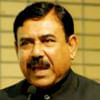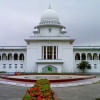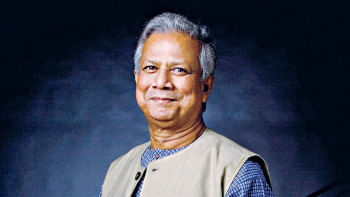Where will these low income communities go?
On January 21, 2016, without any prior notice or proper rehabilitation plan, residents of the Kallyanpur Pora Bosti were evicted from their homes. Officials of the Housing and Building Research Institute (HBRI), local police and apparent outsiders jointly conducted the eviction. At least four people were injured during the eviction. Agitated locals had claimed that they were being evicted without any prior notice, and therefore, they threw brickbats at police and burned scrap materials in protest against the drive.
During the eviction, the high court issued a stay order based on the petition filed by Ain-o-Salish Kendra and residents of the slum. The court also ordered that the slum dwellers could not be evicted without any proper rehabilitation plan prepared for them. Though the eviction stopped after with the high court order, the slum had a fire 'accident' just a day after the drive. Several shops and houses were completely gutted. Apparently, firefighters faced obstacles by outsiders when they tried to enter the slum to douse the fire. The inhabitants of the bosti allege that the fire was a deliberate act so that they would be forced to leave.
After the eviction drive and the subsequent fire, a survey was conducted by Nagar Daridra Basteebashir Unnayan Sangstha (NDBUS), which shows that the eviction drive was responsible for the demolition of around 200 shops and other parts of the slum. One block of the slum was completely destroyed while two other blocks were partially damaged. As a result of the 'illegal eviction', thousands of people from Kallyanpur Bosti were forced to spend days under the open skies, shivering through the cold month of January.
Around 1,200 families lost their homes while the drinking water supply system of the slum was damaged. In fact, even students had to face a heavy loss, as 25 SSC candidates lost their books and other study materials, thus making it impossible for them to take their exams this year.
10 pre-primary schools run by BRAC were completely destroyed.
Kallyanpur is just one of the many examples of eviction drives conducted all over the country frequently. The question here is why do the authorities conduct these kinds of drives so regularly? Does the government not consider the concerns of these low income groups? If they are indeed regarded as citizens of the country with rights like any other person belonging to a higher economic status, the government should formulate and implement rehabilitation strategies for these people before carrying out such drives.
28 percent of Bangladesh's population live in urban areas; 38 percent of this population live in slums. It is projected that half of the country's population will live in urban areas by 2030. In addition, each year around 350,000 people migrate to Dhaka in search of a better livelihood. Many come here after losing their homes to river bank erosions or climate change. A large segment of these people live in slums. Now, while the migration of people from rural to urban settings adds pressure on infrastructure, the environment and the delivery of basic services, there's no denying that these people are the driving force of the city's economy. However, the institutional strategies and frameworks of the government continue to neglect these groups of people.
World Bank projects the population of Dhaka to be 20 million by 2020, which means 2.8 million people are predicted to live in urban slums, amidst the constant threat of eviction. Though the exact number is not available, at least 1 lakh 20,000 people were displaced by evictions from Dhaka's slums between 2006 and 2011, without any specific rehabilitation plan. The number is only increasing over time.
In India, during the Delhi election, the Aam Aadmi Party (AAP) promised to recognise the contributions and necessities of low income communities, and even started working on resettling them. They have already begun implementing slum rehabilitation programmes, and various government departments have already started shortlisting areas for the project. Under the plan, the land held by slum dwellers would be distributed in a ratio of 60:40 - 60 percent of the land would be used to build flats for slum dwellers by a private builder while the rest of the land would be used for developing a residential colony. The Delhi government also has plans of constructing community centres and parks for slum dwellers, while every colony will have a component with provisions for small slums, and domestic workers for the residents of these colonies will be employed from these slums. Thus, the population living on 60 percent of the land will get employment in the houses of those living in the remaining 40 percent. The idea is to provide them employment; additionally, they will be living in flats instead of jhuggis (slums).
On the other hand, Jakarta announced that by 2017 they will fulfil all the indicators where housing and resettlement of the slums dwellers are considered. They started collecting 20 percent land from landlords, that will eventually be distributed to the landless.
Unfortunately, the strategy of Bangladesh's government in the rehabilitation of slum dwellers seems to be going in the opposite direction, as the rights of low income groups are not even recognised. Rather, slum dwellers do not have access to institutional support and other basic amenities, including water, sanitation etc.
Slum dwellers are the rightful citizens of the country, and their rights are protected by Bangladesh's Constitution. Slum dwellers' existence and their contributions need to be recognised. Can you imagine a city without rickshaw pullers, drivers or house help who make your life so much easier? It is high time that we counted them as fellow human beings, and help them get their basic rights. A clear urban sector policy is the next critical step to ensure this.
Evicting people from their homes without their consent or rehabilitation plans is a gross violation of human rights. We are sure that city authorities and other relevant institutions will definitely agree with us.
The writers are Senior Team Leader for Technical Programme and National Lead for Urban Programming at World Vision Bangladesh, and National Urban Specialist at World Vision Bangladesh, respectively. Email: [email protected]

 For all latest news, follow The Daily Star's Google News channel.
For all latest news, follow The Daily Star's Google News channel. 








Comments